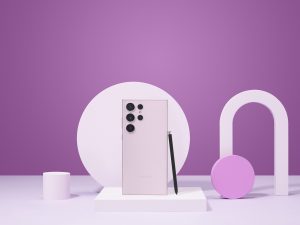Late Thursday night, Nintendo held their Nintendo Switch presentation in Japan. Along with pricing and release date details, Nintendo announced that following a free trial until fall 2017, their online service would switch to a paid model for Switch users. Some of the things you expect out of such a service are included: multiplayer, exclusive deals, and voice chat. That last bit sent the Internet into a tizzy.
The Nintendo Switch website mentions that voice chat would be handled through a smart device app. What people couldn’t figure out was if that’s the only way to do voice chat on the Switch. With it being a portable device in addition to something you can play on the big screen voice chat on the go is an enticing feature. However, gating it behind a voice chat app doesn’t make any sense.
Can you hear me now?
Let’s take a look at a scenario. You’re playing the Switch in a public setting like a coffee shop or on a transit of some sort. Your friend wants to play Splatoon 2 with you. In order to chat with them, you have to have your phone out and talk like that. This presents a few problems. If they’re on speakerphone, now the whole world can hear both sides of the conversation, a practice that generally isn’t acceptable because of how annoying it can be.
So, you put in your headphones. Now you can’t hear your game. Great, so you put your headphones in your Switch so you can hear the game. But wait, now you can’t hear your friend! There’s no convenient way to use voice chat in public unless the Switch itself handles funneling sounds of the game and your friends to your headset. Having a separate app on a separate device is wholly unrealistic and inconvenient.
At home, you run into a similar problem except instead of speakerphone being unacceptable, now both your game and friend are drowning each other out as you adjust volumes on different devices to find a happy medium.
The competitor’s way
The Xbox One and PS4 both handle voice chat through their consoles , so why can’t the Switch? Well here’s what Nintendo of America president Reggie Fils-Aimé had to say about the issue to Wired:
Instead of having some sort of bulky gamer headset, you’ll be able to do it right off your smartphone, put in your earbuds that you use for your standard mobile device. We think that’s a pretty sweet solution. That’s part of the overall opportunity that we see in a subscription service.
As cool as Reggie is, I’m gonna have to disagree with him here. While gaming, this is anything but a solution. The problem with Reggie’s logic is the sheer number of options you have for headsets on any of the Switch’s competing platforms. On my PS4, I prefer my Playstation Gold Wireless Stereo Headset because they’re convenient, and I can choose to prioritize game or voice audio with a nifty slider. But guess what? I can also use tiny earbuds if I choose because I’m given options. On the Switch, I have no such options. I’m stuck using an app, because they don’t want me to use a “bulky gamer headset,” even though I never really have to.
Outside of gaming, this may have some uses. Sometimes, you might not want to type out a message to your friend while you’re out and about somewhere. Maybe you just want to get straight to the point, and in order to do that, you strike up a quick conversation. I can’t tell you the number of times I’ve used the PlayStation Messaging app on my phone when I wasn’t on my PS4. That said, I’m probably in the minority.
People enjoy being given control of how they experience something. What Nintendo’s doing with voice chat on the Switch is very far from giving people control.
I understand that Nintendo is aiming for the most kid-friendly approach possible, but what they have to realize is that, unless you’re a big Nintendo fan, most people aren’t choosing the Switch as their main platform. These days, Nintendo consoles are meant to complement another device, whether it’s a PlayStation or Xbox console or even a PC. Having those devices in a home completely negates Nintendo’s kid-friendly approach because with the touch of a button, they’re experiencing the things you’re trying to shield them from.
What do you guys think? Do you like Nintendo’s solution or do you prefer the more traditional method? Sound off in the comments below.










